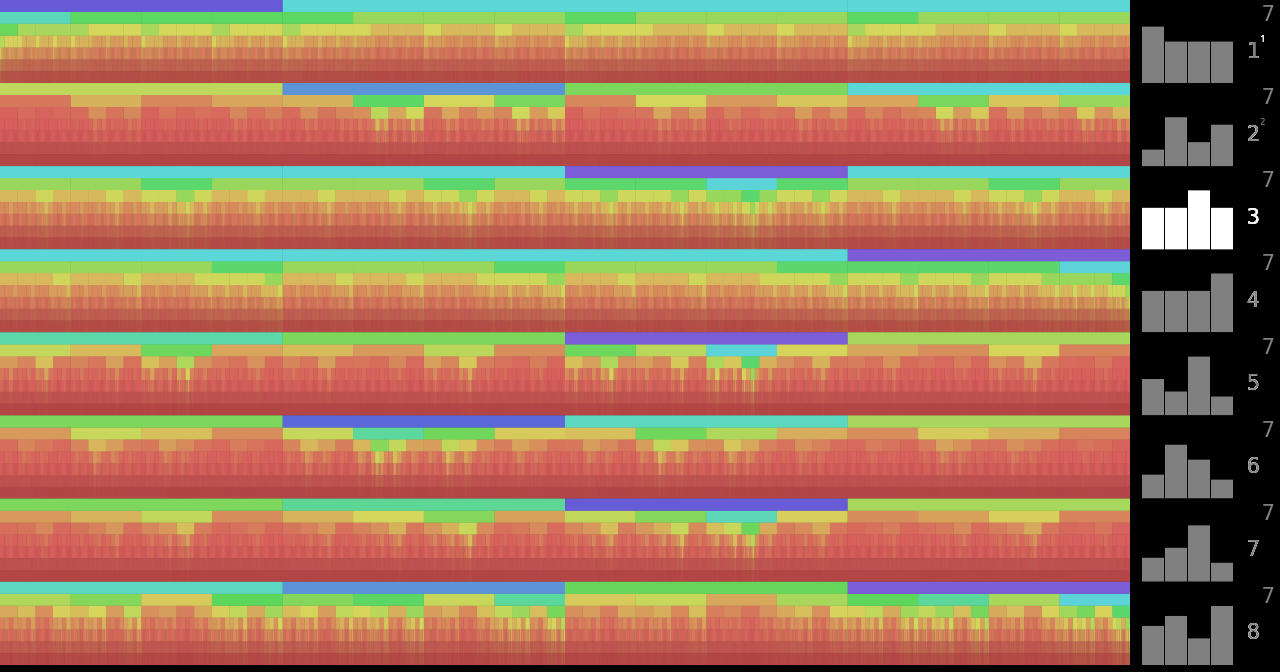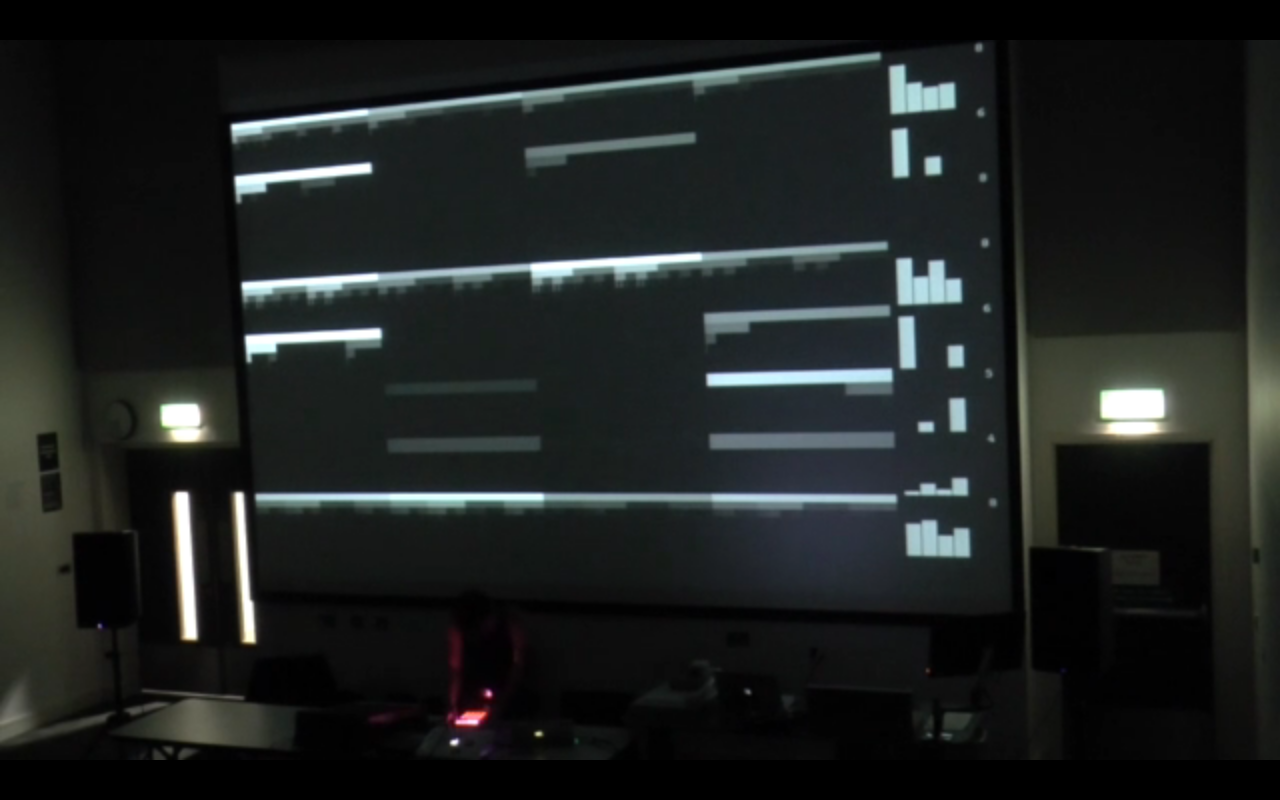Cantor Dust
interactive audio-visual instrument
At rates near that of the heartbeat, we perceive repetition directly as rhythm. At the fastest rates, the repetitions blur together into the perception called “pitch.” Thus we perceive rhythmic patterns differently at different time scales. – Rhythm and Transforms
Cantor Dust is an instrument that generates both the timbre and the rhythm/tempo of its samples using the very same fractal process.
| Fractals are created by repeating a simple process over and over in an ongoing feedback loop. The resulting structure exhibits a repeating pattern at every scale. |
 |
A traditional Cantor set system, for instance, divides a line repeatedly by taking out the middle-third of its segments. The result –what is left from the line– is an infinite set of points (which is where the name Cantor Dust comes from).
We work with a generalised version of the Cantor set system, and repeatedly shrink the length of the segments instead of taking parts of them out.
When we turn the result of these iterations into a wavetable (simply and directly, without adding any effects), we not only find an instant sound rich in character but also a variety of complex, organic rhythms spread over time. And both of these audio features have exactly the same "shape" – only manifesting on different timescales.
~
Developed as part of Gen.AV 2 | new tools for performance with generative audiovisuals.
Available at AVUIs/cantor-dust
~
Background & Resources
- Exploring Audio Fractals, by Terran Olson, 2013
- Rhythm and Transforms, by William Arthur Sethares, 2007
- Cantor set, Wikipedia
- Kronecker product, Wikipedia
- Cantor set animation from Iterated Function Systems
© 2015 Berkan Eskikaya, Louis Pilfold

